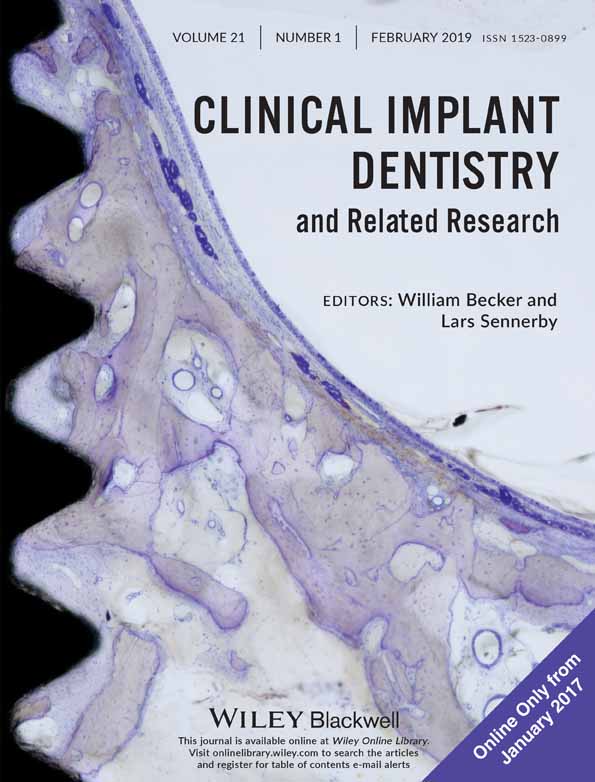A doxycycline-treated hydroxyapatite implant surface attenuates the progression of peri-implantitis: A radiographic and histological study in mice
Abstract
Background
Oral rehabilitation with dental implants has become increasingly common; however, the increase of peri-implantitis is a great concern. Doxycycline (DOX) is a widely used antibiotic that inhibits bacteria growth, inflammation, and bone resorption.
Objectives
To evaluate the progression of peri-implantitis of hydroxyapatite (HA)-coated implants with (5 mg/mL, DOX group) or without (HA group) DOX treatment on the surface.
Materials and Methods
The maxillary first molars of 20 male mice were extracted. Eight weeks later, small titanium screw implants coated with thin HA and treated with or without DOX were placed at the extracted sites. Four weeks after implant placement, half of the animals in both groups were sacrificed, and ligatures were placed around the implant necks in the other half. These mice were sacrificed 4 weeks later. The bone around the implants was examined radiologically and histologically.
Results
Four weeks after the ligature placement, the radiographic measurements revealed that peri-implant bone levels of palatal and mesial sites, and histological measurements showed that bone levels of mesial and distal sites in the DOX group were significantly higher than those in the HA group.
Conclusions
The present results indicating that the DOX-treated HA implant surface attenuates the progression of peri-implantitis.
CONFLICT OF INTEREST
The authors indicate no conflicts of interest to disclose.




